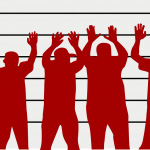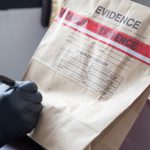Study Finds that the Recollection of Eyewitnesses Can be Enhanced

Eyewitness testimony which includes an identification is a notoriously unreliable form of evidence, with a range of factors impacting upon the quality of observation and recollection of events.
However, an Australian researcher suggests there may be a way to make it more accurate and reliable.
The study
Dr Craig Thorley is a psychology lecturer at James Cook University, who conducted research involving 200 volunteers viewing footage of a robbery,
The footage lasted 2 minutes and 32 seconds, and depicted an elderly woman withdrawing money from an ATM, putting it in her handbag, walking down a residential street, turning into a secluded wooded area and then being assaulted.
After viewing the footage, half of the volunteers were tested on what they remembered using a Category Cluster Recall (CCR) technique and the other half used the standard ‘free recall’ method, which is generally used by police officers.
CCR is where witnesses are asked to describe their observations in a specific order, in this case:
- What each of the persons looked like,
- What they did, and
- What the area looked like.
By contrast, free recall is where observers are simply asked to recall their observations.
While the effectiveness of CCR has been the subject of previous research, Dr Thorley’s study is the first to compare it to free recall.
Results
The study found that those who used CCR were correct in 22.40 instances, whereas the free recall method yielded an accuracy of 18.25.
Those using CCR were better at remembering all three relevant areas: the people involved, what each of them did and the area.
“We interviewed people using both methods and found using CCR produced superior results, with the people using it remembering more correct information about the crime,” Dr Thorley states. “It also increased the amount of different details they remembered.”
However, the doctor acknowledges that the overall rate of error was reasonably low and that further research is required to confirm the findings. Such studies may involve larger groups of participants as well as longer and/or more elaborate scenarios.
That said, Dr Thorley suggests the study, “provides initial evidence to suggest that CCR may be a superior retrieval method that could be used as an alternative to free recall when interviewing eyewitnesses.”
Thorley further admits there is no conclusive explanation as to why the CCR method led to better recall, suggesting it may be a result of focusing and directing the memory of participants.
Again, he believes there is a need for further research in the area.
Possible implications
Honest yet mistaken identification evidence is said to be the leading cause of wrongful convictions.
In the words of the founder and director of The Sydney Exoneration Project, Dr Celine Van Golde:
“Research shows eyewitness misidentification is by far the key cause of wrongful convictions, while other contributing factors can include false memories, false confessions, and laboratory error.”
The US Innocence Project similarly reports that misidentification is the primary factor in 70% of convictions that are later overturned due to DNA evidence.
Rebecca Brown, director of state policy reform at the Innocence Project, estimates that, “Off the bat, 35 per cent of eyewitness testimonies are wrong.”
Identification evidence can be persuasive
Despite the fact that judges in NSW are required to direct juries that there is a special need for caution when considering identification evidence, the testimony of an honest yet mistaken – or otherwise convincing – eyewitness can nevertheless carry considerable weight inside the courtroom.
Adding to the danger is a general misunderstanding among members of the public about how memory works. One study found that a startling 63% of those surveyed believed that “human memory works like a video camera, accurately recording the events we see and hear so that we can review and inspect them later.”
By contrast, all 16 experts who were surveyed disagreed with that statement – with their research suggesting that human memory is often reconstructed.
The same study found that 37.1% of potential jurors agreed with the statement, “the testimony of one confident eyewitness should be enough evidence to convict a defendant of a crime”. Again, all 16 experts disagreed.
It is hoped methods such as CCR will be able to reduce the dangers posed by the weight often given to identification evidence.







